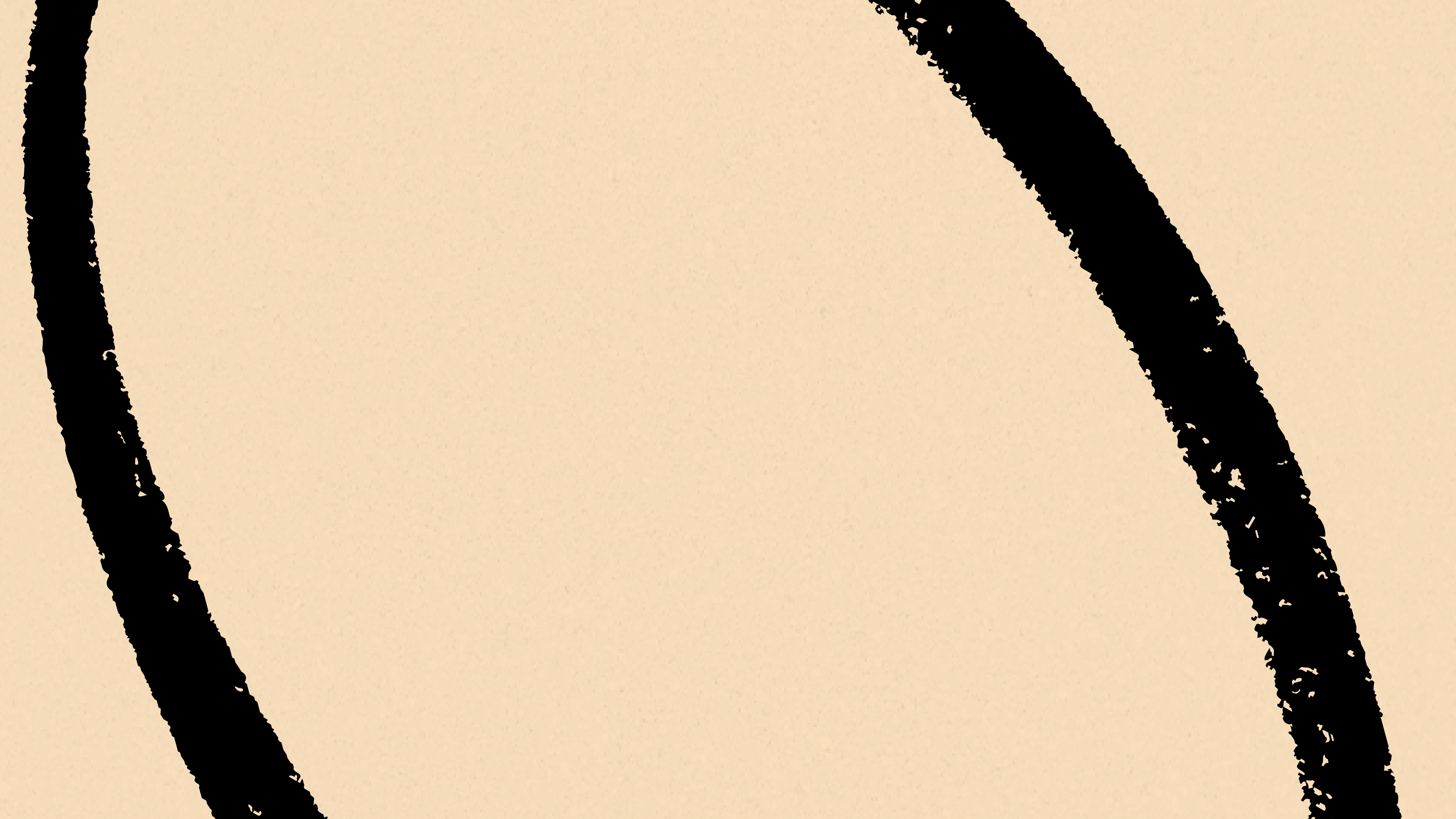
In Part I, I explained Progressive Summarization, a method for easily creating highly discoverable notes. In Part II, I gave you many examples and metaphors of the method in action.
In Part III, I will give you further guidelines on how to make Progressive Summarization (PS) a part of your daily work. They have been gathered from several years of using the technique in my own projects, and teaching it in my workshops and courses.
There are 4 guidelines:
- Don’t apply all layers to all notes
- Use resonance as your criteria
- Design a system for the laziest version of yourself
- Keep your notes glanceable
1. DON’T APPLY ALL LAYERS TO ALL NOTES
This is perhaps the biggest mistake I see as people adopt P.S. I think it has something to do with the type of person who finds productivity, organization, and research attractive in the first place. They tend to be meticulous, detail-oriented, and perfectionistic. They like perfectly enclosed, universal systems that leave no room for interpretation.
You’re going to have to let go of that.
PS is universal in that it can be applied to any kind of media (we’re still focusing on text but I’ll soon explore others). But it is NOT universal in how it’s applied. It is absolutely NOT the goal to stuff every single note through all the layers of summarization. This isn’t a funnel, where the more notes reach the bottom of the funnel, the better:
There is no “preferred” level of summarization. More summarization is not better. Instead, you want to calibrate the amount of attention you’re paying to any given note, to correspond with how valuable that note is.
Take the most common case — a note that is average in its insight and usefulness. This is the kind of note you will most often be dealing with, statistically speaking. You want to capture the best parts of the source as Layer 1, put it in the appropriate notebook based on its actionability according to P.A.R.A., and then you want to leave it alone. It may be months or years before you see this note again. That is not only perfectly fine, it is your goal: to put a strict filter on what is allowed to pop back into your attention. To make that note “earn its keep” by having some relevance to a real project at some point in the future. If that relevance never happens, then you don’t want to spend one extra second summarizing it.
I believe that notes follow a power law in terms of their value:
As in the graphic on the right, a very small proportion of notes (at the left edge) contains the great majority of the insight and usefulness. The rest of your notes (the right trailing edge), contain much less value. You still want to keep them around for unexpected uses, but focus your summarizing attention primarily on the high-value notes.
Here’s a breakdown of approximately how many layers I apply to my notes:
Starting at the bottom:
- I only save any notes at all on about 50% of the sources I consume. This completely eliminates 1 out of 2 sources from any future consideration, which is wonderful
- Half of those Layer 1 notes (or 25% of the total originally consumed) make it to Layer 2 bolding
- 4 out of 5 Layer 2 notes (20% of the original) make it to Layer 3 highlighting, since highlighting is relatively easy
- 1 out of 4 Layer 3 notes (5% of the original) make it to Layer 4 executive summary, since that takes much more energy
- And I would estimate that less than 1 out of 5 Layer 4 notes (<1% of the original) make it to Layer 5 remix, since that takes a LOT of time and energy
Can you see how crazy it would be to “require” every note to make it to Layer 5? Doing so would require spending a lot more time on sources I find less interesting, at the expense of sources I find more interesting.
2. USE RESONANCE AS YOUR CRITERIA
Notice that there is no explicit criteria for deciding what to include at each layer. I’ve seen attempts to create it, but I think it’s a fool’s errand.
Applying such criteria would require System 2 analytical thinking, which is slow and tiring. Instead, we want to recruit our fast, intuitive System 1 thinking, by using “what resonates” as our criterion.
This is very difficult for Type A organizers to accept. It seems terribly vague and error-prone. And it is. But it also takes advantage of one of the few things your first brain does better than any computer: pattern-matching.
Resonance is a diffuse form of attention, a sort of emotional-intuitive perception that can scan for multiple kinds of patterns at once:
- what is surprising or counter-intuitive
- what we know to be true, but we never quite thought of it that way
- what aligns with and helps us interpret past experience
- what is inspiring, moving, or meaningful
- what helps us simplify and interpret other, more complex ideas
- what tickles us in some inexplicable way, often becoming clear only much later
- what speaks to our deepest goals, values, priorities, and questions
- what breaks or challenges mental models, conscious or unconscious
- what is rare and interesting, and could potentially be useful in the future
You could scan for each of these patterns one at a time using the analytical System 2, but it would take forever. Only our intuition, like a spidey-sense attuned to anything abnormal in our surroundings, can handle so much unstructured information at once.
Don’t slip into analysis or interpretation mode, trying to figure out how to categorize what you’re reading, what it “means,” or what topic it falls under. Instead, your only job is to expose the semantic hooks already found in the text itself. And to leave the job of figuring out how to put it to use to Future You.
3. DESIGN A SYSTEM FOR THE LAZIEST VERSION OF YOURSELF
I often see people get excited about PS, and start adding “features.” Flush with motivation, they begin inventing labeling systems, tagging hierarchies, naming conventions, and taxonomies. They try to run before they’ve learned to walk, overengineering the summarization layers with a table of contents for every note, or drawing a picture for every note, or making the formatting more consistent for every note.
This is the biggest pitfall, and the thing most likely to make you fall off the wagon.
You have to remember that you’re not designing a system for the best version of yourself — the one that is motivated, relaxed, with lots of time and energy. You’re designing a system for the worst version of yourself, as Alan Cooper says in his book on interaction design, About Face:
Design an interaction model for the worst version of yourself — the one that’s tired, lazy, unmotivated, frazzled — because that’s the one that usually shows up when you need a solid workflow to fall back on.
You have to limit yourself, most of the time, to only what you’re willing to do for every single note, consistently and far into the future. I find that my laziest self only wants to read what interests him. By using a method where I’m interacting with my favorite ideas almost all the time, I never feel repelled from my notes. Because bolding or highlighting as I read takes almost no energy, I can do it mindlessly, even meditatively, as a sort of knowledge ritual. Knowing that I can add real value to my notes at any time, in any place, in any state of mind, makes reading and note-taking tremendously addicting.
How do we design a note-taking method for the worst version of ourselves? As Dee Hock puts it:
Simple, clear purposes and principles give rise to complex and intelligent behavior. Complex rules and regulations give rise to simple and stupid behavior.
We want simple purposes and principles. For that reason, PS is nothing but a few loose formatting tips and one overarching rule:
Spend more time on things that interest you
Aligning your attention with what interests you makes this process enjoyable, thus sustainable.
4. KEEP YOUR NOTES GLANCEABLE
One of the key ideas you’ll need to grasp is that more highlights are not better. Generally speaking, more highlights just dilute the discoverability, and thus the value, of all the others.
The principle here is that you want to preserve the “glanceability” of your notes. It’s critical that you’re able to, with just a quick glance, get the gist of a paragraph. The most useful sources of information in our lives have this quality:
- With a page of Google results, you don’t have to carefully read every word — just keep your vision unfocused and casually scan for keywords that grab your attention
- With a photo album, you don’t need to individually examine each element in each photo — your eyes can effortlessly scan dozens of photos looking for a face, a place, or an occasion
- Glance around the room you’re in — you can effortlessly take in the whole situation, without paying critical attention to any single part of it
Glanceability is crucial because our brain is designed to quickly grasp the gist of a scene, not to individually analyze every object like a computer. As soon as you give the brain too many details, it has to drop into analytical mode. As a general rule, the more selective and picky you can be about what to keep, the better. A major reason for preserving earlier layers is to give you a safety net so you can feel comfortable boldly eliminating huge portions of text.
RECOGNITION OVER RECALL
The above guidelines work because of a deep principle in our cognition: we are far, far better at recognition than recall.
You’ve probably had the experience of reading an article, and not finding anything particularly surprising. You basically agree with everything the author says, even if you never thought of it exactly that way before. You can recognize the validity of what they wrote as something you “already knew.” But this in no way means you could have recalled and written it down yourself.
But if you already knew it, where does that knowledge live? In the vast space of things you can recognize, but not recall:
The brain is simply not designed to recall things. You memorize a phone number and minutes later it’s gone. All the housekeeping features in your brain are constantly clearing out old memories, and weakening unused connections.
On the other hand, your brain’s recognition abilities are astounding: we can recognize faces in an instant, after many years. We can read just a couple sentences and tell that we’ve read it before. Even situations only vaguely similar to past experiences trigger a déjà vu feeling.
By relying on recognition instead of recall, we gain access to much greater bandwidth and memory in our creative pursuits. Here’s the catch: recognition doesn’t work in isolation. It requires some sort of outside stimulus for us to recognize. It requires a concrete medium for our senses to push up against.
This is the true purpose of Progressive Summarization: not to exhaustively catalogue every idea like bugs in a collection, but to create an environment of rich triggers, prompts, and hooks to spark memories, connections, and even more new ideas. Like a digital self-portrait, this environment helps you recognize what you already know and have already thought, by presenting back to you only the most highly distilled nuggets of insight. It is a digital environment for self-inspection, like a hall of mirrors allowing you to see yourself from every possible angle.
ASKING BETTER QUESTIONS
When we read, we are usually trying to do many things at once: reading the words, assigning meanings to the word, interpreting the sentences, tracking the flow of the argument, remembering the overall structure of the book, deciding whether we agree or not, fitting the ideas into our existing mental models, thinking about related things we’ve read, etc.
In other words, we are “always/already reading.” It’s exhausting, juggling so many strands of thought at once. This is why reading is so taxing for most people.
What we are doing with Progressive Summarization is “unbundling” your thinking. We’re getting the types of thinking that are relatively effortless — absorbing the words, noticing what resonates, highlighting those parts — and pulling them as early in time as possible. This helps make reading pleasurable, and has us performing work that will be of value no matter how or when it’s used.
And we are getting types of thinking that take more effort and are dependent on a specific context — analyzing, interpreting, understanding, comparing, contrasting, synthesizing — and scheduling it for a time in the future when that thinking will be most accurate and useful. But we’re not scheduling it on a calendar, for a certain day or time. Once again, we are scheduling it contingently — when X happens, if Y is needed, if I want to do Z.
Why is leaving these thinking jobs to Future You a good idea? Because you have no idea what a given note means, how to interpret it, how it should be categorized, or how it’s going to be useful. Its meaning is determined by the lens you use to examine it. You could use many interesting lenses, but the best one is a current project, problem, or question.
Using a current project as a lens, you might find your notes on a book are most useful as a model of how to structure arguments. Using a different problem as a lens, you might find those same notes are valuable for one minor point you hardly even noticed before. And using a question as a lens, you might find the author provided answers without even knowing it.
Having a specific project as a lens gives you tremendous motivation, clarity, direction, and focus. It helps you cut away the good ideas to focus on the great ones. A real project provides a state of mind optimized for finding a solution. Instead of just taking notes to answer questions you have now, package them up as potential answers to future questions you can’t even imagine.
The truth is that your note-taking system is not meant for finding answers. You have Google for that. Answers are kinda boring anyway— they are correct one minute, and then no longer apply the next minute as conditions change.
The purpose of your note-taking system is to help you ask better questions, which no computer can do. The best questions don’t just seek what’s true, but what’s interesting. The best questions cleave a mental model in two, exposing its inner workings. The best questions open up new avenues of thinking, expanding outward in a generative space of possibilities. And they do all this with a humble and generous spirit of curiosity.
In Part IV, we’ll apply compression principles to non-text media, including drawing, music, social media, and many others.
The Only Subscription
You Need to
Stay at the
Edge of AI
The essential toolkit for those shaping the future
"This might be the best value you
can get from an AI subscription."
- Jay S.
Join 100,000+ leaders, builders, and innovators

Email address
Already have an account? Sign in
What is included in a subscription?
Daily insights from AI pioneers + early access to powerful AI tools

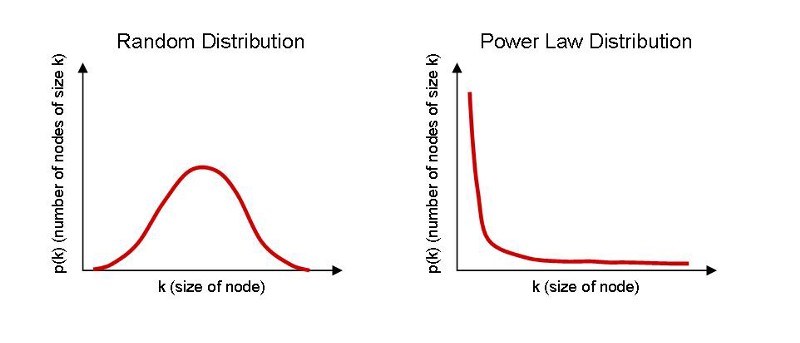
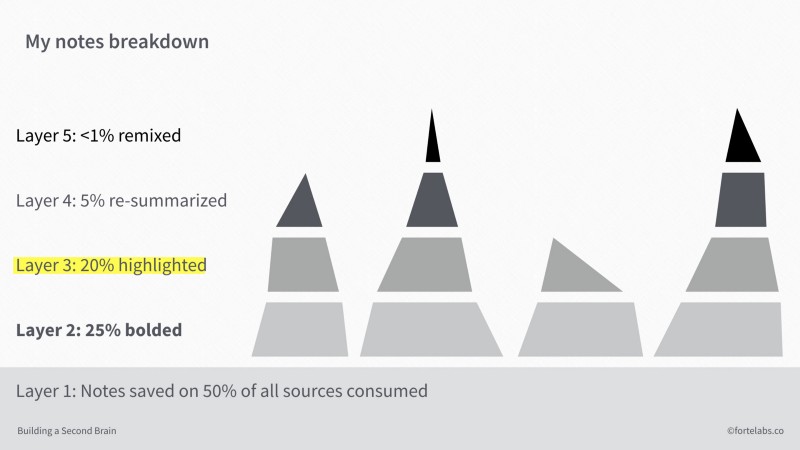
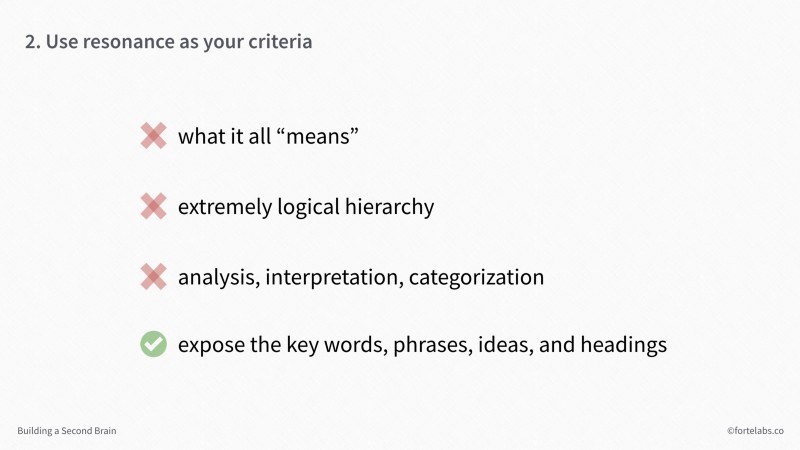
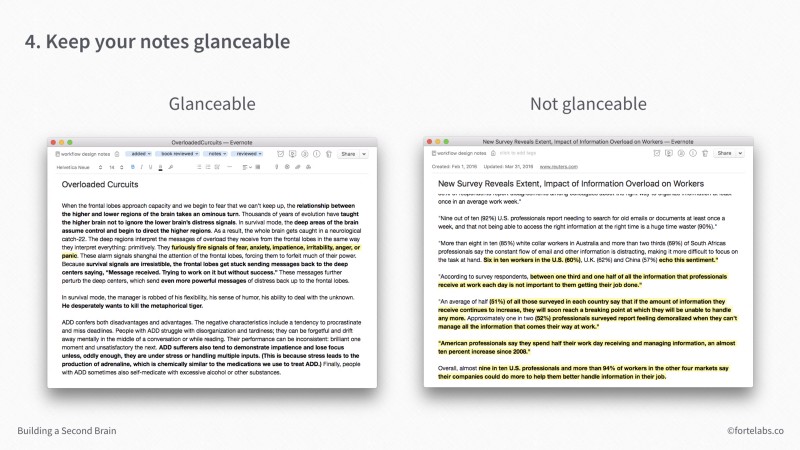
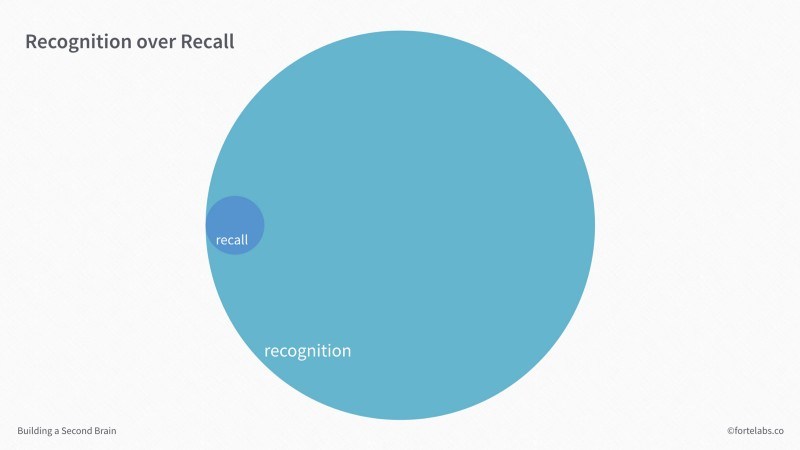
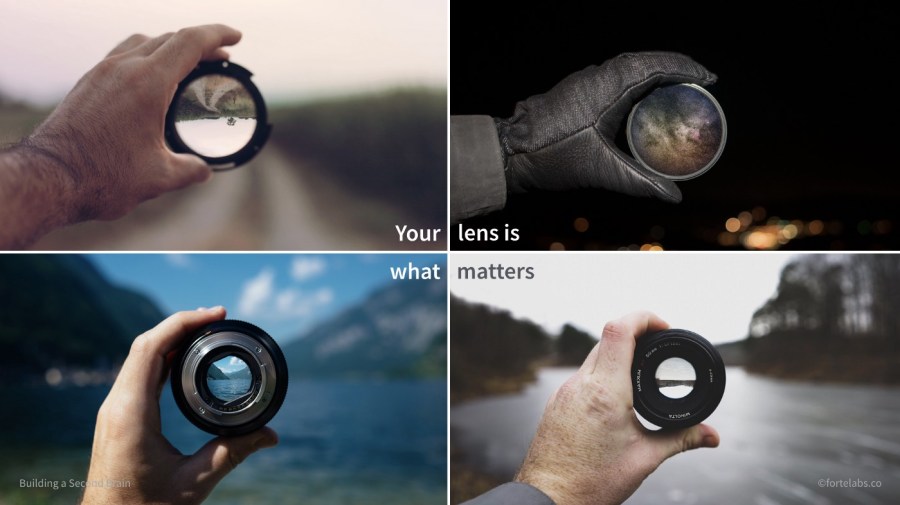







Comments
Don't have an account? Sign up!